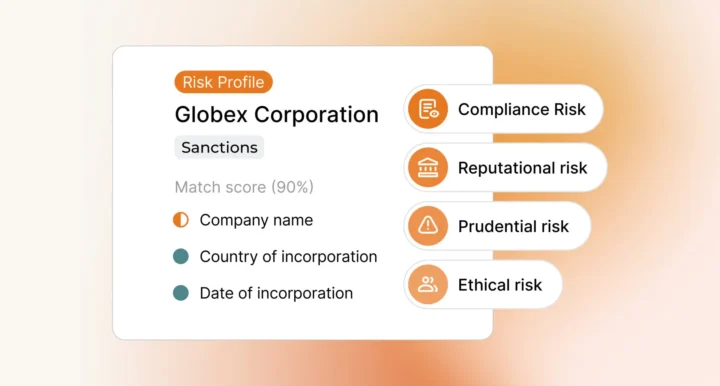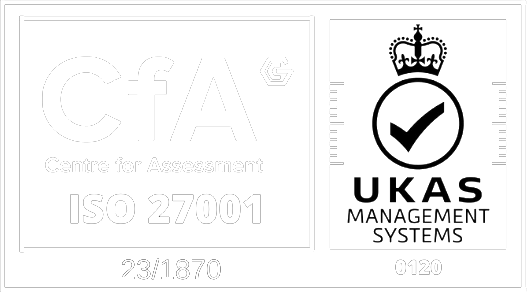The Anti-Money Laundering Act 2020 (AMLA) is a cornerstone of US financial crime legislation. Setting out numerous corporate rules and obligations, the Act affects all US banks and financial institutions, and requires CFOs, and their teams, to think carefully about their day-to-day compliance duties.
In this post, we’re going to explore AMLA’s key regulatory details and compliance implications, and examine incoming regulatory activity that might affect your AMLA compliance posture.
What is AMLA?
Passed by the US Senate in 2020, AMLA came into effect on 1 January 2021 under the National Defence Authorisation Act.
Representing the most significant reform of US anti-money laundering (AML) rules since the Patriot Act in 2001, AMLA introduced significant regulatory changes. The Act was part of an effort to modernise the US’ AML infrastructure to account for advances in financial technology, and increasingly sophisticated criminal methodologies.
AMLA broadly expanded the authority of federal regulators, including the US Treasury’s Financial Crimes Enforcement Network (FinCEN), with new investigative powers. With that in mind, AMLA’s key AML/CFT provisions include:
- Beneficial ownership: Expanded beneficial ownership disclosure requirements for smaller firms, with 20 employees or fewer. The requirements are designed to address the misuse of shell companies to conceal illegal financial activity.
- Politically exposed persons: Expanded requirements for preventing politically exposed persons (PEPs) from misrepresenting the source of funds when dealing with US firms.
- Non-traditional financial institutions: Expansion of Bank Secrecy Act (BSA) compliance requirements to certain non-traditional financial institutions, including those dealing with virtual currencies, such as cryptocurrency exchanges.
- Criminal and financial penalties: New penalties for violations of money laundering rules, including prison sentences of up to 10 years, and fines of up to $1 million.
- Expanded penalties: Increased financial penalties for violations of existing money laundering regulations – set out in the BSA and Patriot Act.
- Whistleblowers: Enhanced protections and rewards for whistleblowers that expose violations of money laundering regulations.
- International money laundering: Expanded powers for US law enforcement agencies to investigate foreign entities suspected of money laundering. The provision includes new US Treasury subpoena powers.
- Information sharing: New information sharing rules for US entities with foreign subsidiaries and affiliates.
AMLA Compliance Priorities
Given the increased penalties imposed by AMLA, it’s critical that firms in the US understand how to comply with the regulations, and are able to adjust their compliance posture to account for emerging risks.
Key priorities for compliance with AMLA include:
- Customer due diligence: AMLA’s focus on beneficial ownership (along with existing BSA requirements), means that firms must be able to verify customer identities through robust customer due diligence (CDD) and, where necessary, enhanced due diligence (EDD). While customer identities may be verified via official documentation such as passports or driving licenses, firms must also affirm beneficial ownership, which involves capturing shareholder information, incorporation dates, operating locations, and so on.
- Screening: To account for increased customer risk, firms should review their AML/CFT screening capabilities. AMLA’s focus on non-traditional financial institutions, PEPs, beneficial ownership, and foreign money laundering may require firms to take a different approach to risk screening in order to capture emerging risks.
- Compliance automation: The sheer volume of risk data that firms must consider as part of their AMLA obligations means that compliance teams should seek to integrate automated solutions wherever possible. Automated screening tools, for example, can search thousands of global news stories and deliver actionable financial intelligence in seconds – a level of efficiency that would be impossible in a manual search process.
Recent AMLA Developments
The US government continues to adjust the regulatory detail of AMLA in order to account for changes in the domestic and global risk landscapes.
- The Corporate Transparency Act: The Corporate Transparency Act (CTA) was passed on 1 January 2024, strengthening AMLA’s beneficial ownership provisions. As part of the CTA, “reporting companies” have to submit company details, including owners’ personal information, to a FinCEN beneficial ownership database. In December 2024, several courts, including the US 5th Circuit Court of Appeals, blocked the implementation of the CTA nationwide. The US Supreme Court subsequently overturned the 5th Circuit decision but as of 1 February 2025, CTA enforcement remains blocked as a result of an earlier decision by a court in Texas.
- Proposed Rule: In July 2024, FinCEN put forward a ‘proposed rule’ to strengthen certain AMLA provisions. The rule emphasises that compliance solutions need to be “effective, risk-based, and reasonably designed”, in order to help firms become more responsive to the specific challenges of their risk environment.
- Fintech innovation: FinCEN has continued to encourage US firms to explore technological solutions to AML/CFT challenges through ‘the promotion of responsible financial service innovation,’ in alignment with AMLA’s broader objectives. For example, innovations such as AI-supported analytics, may help firms enhance their screening processes and reduce false positive alert rates.
Screening Advantages
In an evolving regulatory environment like the US, firms must be capable of managing existing risks while anticipating future challenges. With that in mind, automated screening solutions represent the best way of keeping pace with AMLA requirements.
Merging human expertise with advanced data collection and analysis, screening technology provides critical visibility of the risk landscape which, in turn, facilitates stronger, more informed compliance decision-making. Even better, automated screening solutions ensure compliance teams stay agile, adapting quickly to incoming AMLA amendments, while managing evolving money laundering methodologies.
Last updated: 19 February 2025





